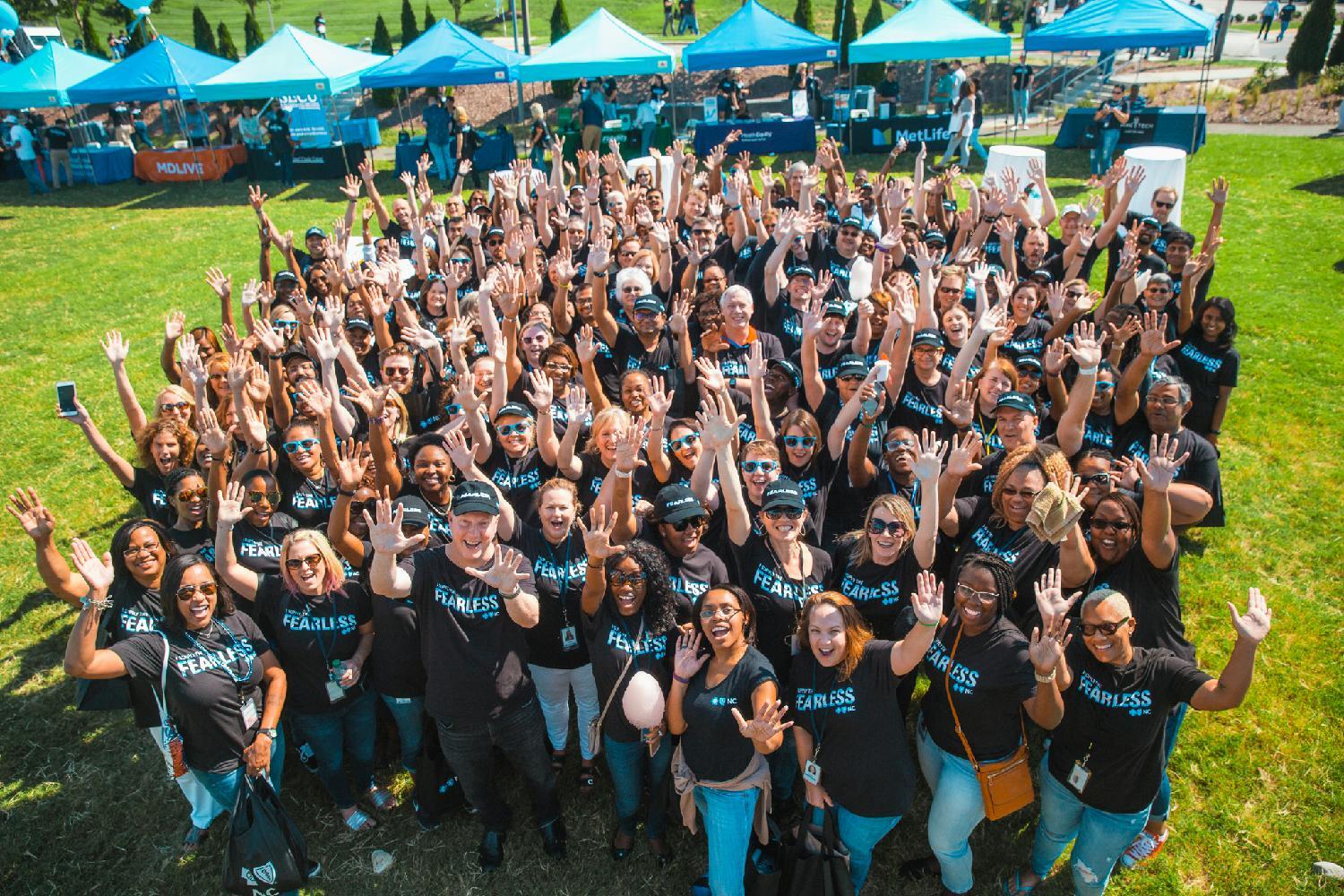Employee Surveys, High-trust leadership
The plant-based meat producer revamped its culture, driving eye-popping increases on its annual Great Place To Work survey.
How can leaders rebuild trust with employees following major changes to the organization?
That was the challenge facing plant-based meat producer Tofurky after being acquired by Morinaga Nutritional Foods in February of 2023. The acquisition came as the entire plant-based meats industry was consolidating, and employees were uncertain about their future.
That uncertainty showed up in the company’s annual Great Place To Work® Trust Index™ Survey, completed right after the acquisition in April of 2023.
Jeff Schulkers, chief operating officer, was part of the management team that spearheaded efforts to transform the company. Schulkers started his tenure in 2022 by listening to employees to understand what was working well — and what wasn’t.
“I try hard not to come in with preconceived notions,” he says, “but really try to understand the voice of our employee base and what their experience is in the organization.”
Trust Index survey results offered the quantitative feedback that illuminated clear opportunities. Tofurky leaders started by looking at the biggest decreases in Trust Index scores from the previous year.
From there, they identified changes to make, redefined roles and responsibilities, increased communication between leaders and the frontline, and brought in new leaders.
The results speak for themselves, as Tofurky earned Great Place To Work® Certification™ for the first time in May of 2024, with 87% of employees saying the company is a great place to work.
Here’s how it transformed its culture, with lessons you can use to inform your own journey:
Redefining roles and responsibilities
Tofurky knew it needed to engage the frontline to recalibrate its culture. Tofurky’s operations leaders threw out the old playbook to redefine roles.
Tasks that should not be on a supervisor’s plate moved to the floor lead. Those floor leads were then asked to embrace a more strategic role, attend major planning meetings, and take ownership for their team’s performance.
To build trust, leaders were vulnerable and accountable by asking and answering questions like “What am I doing well? What can I do better?”
“I work in manufacturing and production on purpose. I like the people that it attracts, but I also know what it takes to be good — and it’s not easy.” - Estela Caballero, people partner for the production operations, Tofurky
When they received employee feedback, they moved quickly to fix problems.
This approach allowed leaders to build confidence and acumen to take ownership for their team and its operations. Clear communication was key to managing change.
“When we invest that time upfront in change management, if employees are engaged and part of the decision, there’s a very strong likelihood that they’ll buy in,” Schulkers says.
The effort showed up in Tofurky’s survey results, with a 23-point increase from 2023 to 2024 in the percentage of employees agreed that management involves people in decisions that affect them. The number of employees who said they received meaningful training and development opportunities also went up 25 points.
Two-way communication with the frontline
One of the first changes was to ensure that frontline workers felt they had a voice and were included in strategic decisions.
“It’s not coming to employees and saying, ‘Hey, this is what you’re going to do. This is what we want to accomplish,’” Schulkers says. Instead, his message was “Let’s work together.”
The team created multiple efforts to bring employees together and communicate top priorities and initiatives for the business. Production was stopped to hold monthly town halls where employees could get together for an hour and share goals and accomplishments for each business function.
They held new daily management meetings to ensure timely information was cascaded from senior leaders all the way through the organization. Leaders also were asked to share what they heard from their direct reports, ensuring information was flowing both ways.
Additionally, the operations team hosts roundtables once a month, where five employees who volunteer to participate can share direct feedback about their experience.
Making leaders approachable
What does it take to really change a culture and get employees to share honest and open feedback? It starts with showing high levels of care for workers in the organization, something that is a priority for Estela Caballero, people partner for the production operations team at Tofurky.
“I work in manufacturing and production on purpose,” Caballero says. “I like the people that it attracts, but I also know what it takes to be good — and it’s not easy.”
Vulnerability and openness can take many different forms, and it might be different for every employee. For some, when Caballero dressed up in a hot dog for a town hall event, that might have been a signal that she didn’t take herself too seriously, that she might be someone they could talk to about their concerns.
“I try hard not to come in with preconceived notions, but really try to understand the voice of our employee base and what their experience is in the organization.” - Jeff Schulkers, chief operating officer, Tofurky
For others, it might be having a senior leader’s phone number, which were posted all around the manufacturing building. “You can walk around to any building and see people with high-level positions of authority and their cell phone numbers showing up on TV screens,” Caballero says. As a result, employees can choose how they want to engage.
The efforts paid off in 2024, with an impressive jump in the number of employees who said management is approachable and easy to connect with, up 21 percentage points in 2024 from its 2023 survey.
Measuring impact
Tofurky’s leaders have a clear set of KPIs to understand how the employee experience drives business results. For the operations and supply chain part of the business, there are 26 different KPIs.
“Do all those KPIs at any given month, do they move positive? No, but the majority of them do,” Schulkers says. There are specific measured outcomes that relate to culture, such as the number of workplace safety incidents reported.
“The improvement we’ve had in workplace safety is — I'll be frank, I have not seen the level of improvement we’ve had year over year in any other organization I’ve been in,” says Schulkers. The percentage of employees who said they had a physically safe work environment went up 24 points from 2023 to 2024.
Other employee experience metrics that matter include what Schulkers calls “lagging indicators” like turnover and “leading indicators” like stay interviews.
Other benefits of a stronger workplace culture? Productivity and performance.
“We’ve improved in our quality. We’ve improved in our efficiency, and our downtime. Our overtime rates have improved because our productivity is up,” Schulkers says. With improved cross training, workers have been more mobile as well, shifting between different production lines and improving staffing.
Even better, Tofurky’s efforts to transform its culture came with very little cost.
“There hasn't been a single thing that we have done that even registers in the P&L,” Schulkers says. “We pull employees off the floor for an hour, but guess what? They’re aligned to what happened in the last month. They’re aligned to what we want to achieve in the next month.”
That alignment provides significant dividends.
“We view it as investing in our workforce and our workforce is where the value is produced,” Schulkers says.
Turn culture insights into business wins
Let the Trust Index™ Survey reveal your workplace’s hidden strengths and areas for growth. Start transforming today.







